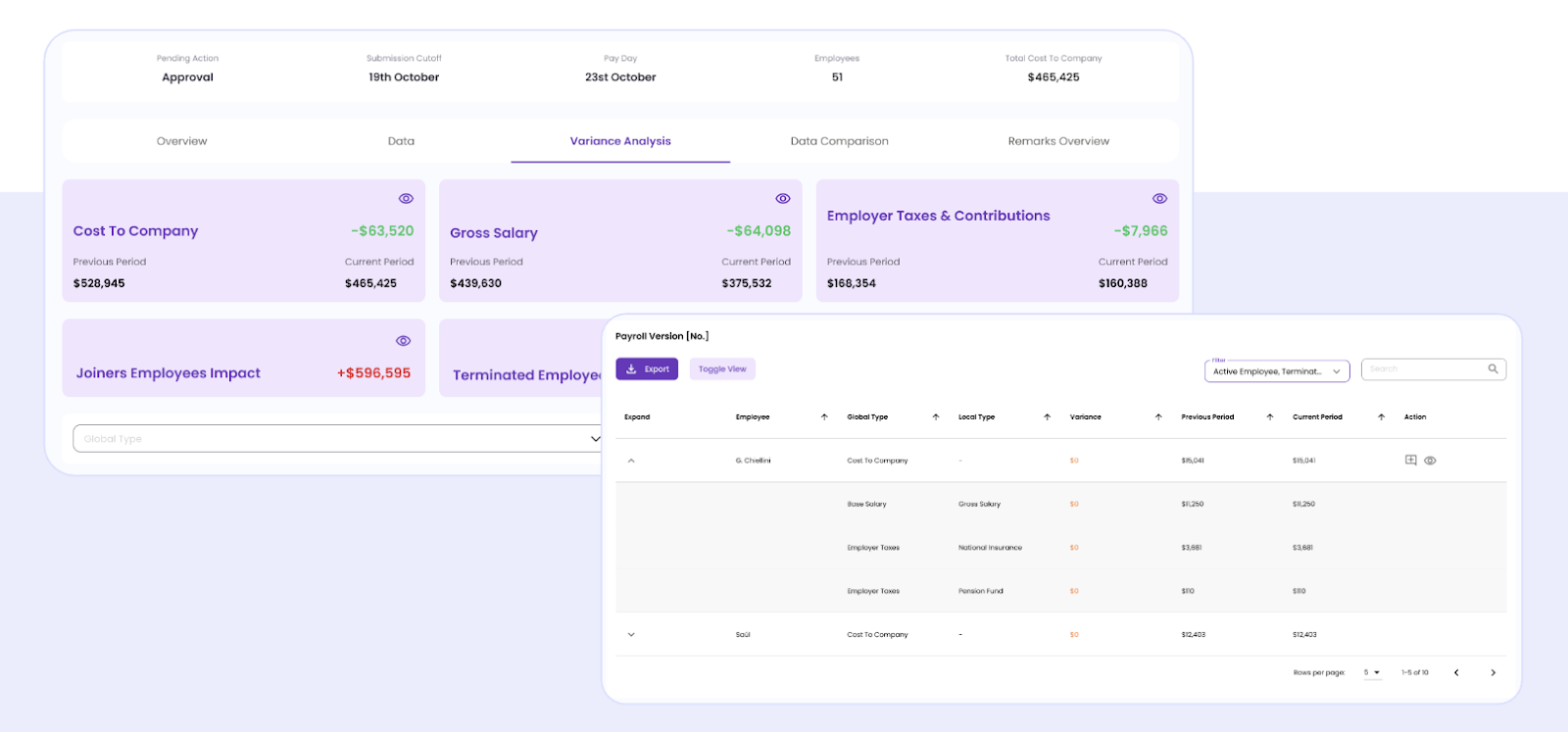Copied to Clipboard
Ready to get Started?


Key Takeaways
Multi-Layered Tax System: New York requires managing federal, state, and local taxes, including Personal Income Tax (PIT), Unemployment Insurance (UI), SDI, PFL, and the Metropolitan Commuter Transportation Mobility Tax.
Employer Registration: You'll need to register with the New York Department of Taxation and Finance and the Department of Labor using Form NYS-100.
Regional Minimum Wages: Minimum wage varies by region – for example, it’s $16.50 per hour in NYC, Long Island, and Westchester, and $15.50 in other parts of the state as of 2025).
Electronic Filing: Payroll taxes must be filed electronically through New York’s Online Services portal with quarterly and frequent deadlines based on tax withholdings.
Beyond the glittering lights of Times Square, iconic landmarks, and exceptional theatre, New York boasts one of the most intricate payroll and taxation systems in the United States. With a combination of state, federal, and local taxes, businesses have to navigate a minefield of regulations and requirements to remain compliant and avoid costly penalties.
From progressive income tax rates to varying minimum wage laws across regions, managing payroll in New York requires close attention to detail. On top of this, your business must handle deductions for programs like State Disability Insurance (SDI) and Paid Family Leave (PFL), as well as comply with the Metropolitan Commuter Transportation Mobility Tax (MCTMT) in certain areas.
For employers looking to move into the market or add a team member to your global workforce, mastering these payroll requirements is a must. In this guide, we’ll take you through how to do just that.
Step 1: Registering as an Employer in New York
First things first – how do you legally employ new hires in the state of New York? You have three options available to ensure payroll, taxes and compliance runs smoothly.
Option 1: Registering Directly with the New York Department of Revenue
If you choose to handle payroll and taxes in-house, you'll need to register directly with the New York Department of Revenue. This process involves:
- Creating an Account: Visit the Department of Revenue's e-Services portal to create a username and password.
- Providing Business Information: You'll need to supply details such as your Federal Employer Identification Number (FEIN), business name, and the date you first paid wages exceeding $100.
- Selecting Tax Programs: Indicate which tax programs you wish to enroll in, such as Unemployment Insurance (UI), Employment Training Tax (ETT), and State Disability Insurance (SDI).
Once registered, you'll receive an Employer Payroll Tax Account Number, which is essential for filing returns, making payments, and managing your account online.
Option 2: Partnering with an Employer of Record (EOR)
Don’t have your own entity in New York? An EOR assumes the legal responsibilities of employment on your behalf, streamlining operations and helping you stay ahead of shifting state and federal regulations. An EOR like Playroll handles the following:
- Payroll Processing: Automates employee compensation and deductions, and ensures timely payments.
- Compliance: Makes sure you stay compliant with labor laws and regulations on a local, state and federal level.
- Benefits Administration: Takes care of mandatory benefits, and provides a wide range of options of additional, competitive perks to reward your team.
This means you win back valuable time to focus on your core operations, while knowing that all employment-related obligations are met.
Option 3: Engaging a Professional Employer Organization (PEO)
A Professional Employer Organization (PEO) offers a co-employment model, where both your business and the PEO share employer responsibilities. A PEO is the most suitable option if you already have your own established legal entity, and just need HR and administrative support.
This includes:
- Payroll and Tax Administration: The PEO manages payroll processing and ensures accurate tax withholdings and deductions.
- Human Resources Support: Assistance with HR functions such as recruitment and employee relations.
- Risk Management: Providing workers' compensation and other insurance coverages.
Partnering with a PEO can provide access to comprehensive HR services and employee benefits, often at a lower cost than managing these functions in-house.
Step 2: Understanding New York Payroll Taxes
New York’s payroll tax system is one of the trickiest in the U.S., with employers having to juggle taxes at the federal, state, and local levels. Each of these comes with its own rules, rates, and deadlines, making it essential to stay on top of the details.
Types of Payroll Taxes in New York
We’ve broken down the key elements of the system so you can better understand what’s involved and how to keep your payroll running smoothly without getting yourself into a difficult legal bind.
Personal Income Tax (PIT)
PIT is a progressive tax on employee income, with rates ranging from 4% to 10.9%. This tax applies to all employees in New York, and the rate increases based on income level. In addition to the state tax, employees in New York City and Yonkers are subject to local taxes. For example, an employee in NYC might face an additional tax rate of 3.078% to 3.876%.
Unemployment Insurance (UI)
UI is paid by the employer to support workers who lose their job through no fault of their own. The tax rate varies based on the employer’s experience rating, ranging from 2.1% to 9.9%. New employers pay the base rate of 4.1%.
This tax applies to the first $12,800 in wages for each employee. For example, if an employee earns $15,000, UI tax will only apply to the first $12,800.
State Disability Insurance (SDI)
SDI provides benefits to employees who are temporarily unable to work due to illness or injury unrelated to their job. The employee pays this tax at a rate of 0.5% of their wages, up to a maximum of $31.20 per year.
For instance, if an employee’s annual salary exceeds the wage limit, SDI will be withheld up to $31.20 for the year.
Paid Family Leave (PFL)
PFL allows employees to take paid leave for family care, bonding with a new baby, or military service. The employee pays this tax at a rate of 0.388%, with a maximum annual deduction of $354.53. For example, an employee earning $100,000 per year would pay $388.00 in PFL taxes, but the maximum cap is $354.53.
Metropolitan Commuter Transportation Mobility Tax (MCTMT)
The MCTMT is paid by employers located within the Metropolitan Commuter Transportation District (MCTD). The tax applies to employers with payrolls exceeding $312,500 per quarter.
The rate ranges from 0.11% to 0.895%, depending on the zone. For instance, if an employer’s payroll exceeds $312,500 in a quarter, they must pay the MCTMT on that payroll.
Submitting Payroll Taxes in New York
In New York, payroll taxes have to be filed electronically, but can be filed via physical forms under very specific circumstances. That being said, the state strongly encourages electronic filings because it’s generally more accurate and simplifies compliance.
Online Services Portal
Employers must file key payroll forms such as NYS-45 (Quarterly Combined Withholding, Wage Reporting, and Unemployment Insurance Return) and NYS-1 (Return of Tax Withheld) through New York’s Online Services Portal. This central hub makes the filing process much simpler and reduces the risk of errors like duplicate or missing documents.
PrompTax Program
If your business has over $100,000 in annual withholding, you’ll need to make monthly or quarterly payments under New York’s PrompTax Program, depending on your withholding amounts. These are designed to encourage faster and more consistent tax payments.
Limited Paper Filings
While the state prefers electronic filing, a limited number of paper filings are allowed for specific situations, such as amendments to previously filed forms. But we would suggest avoiding paper filings whenever possible to stay compliant with New York’s electronic filing mandates and because it’s typically more accurate.
Payroll Tax Deadlines in New York
To stay compliant with local regulations and dodge some hefty penalties, it’s a good idea to prepare and submit your tax filings well in advance.
To help make sure you don’t miss any of the deadlines, here’s a simple breakdown of the key dates:
- First Quarter (January - March) - Due Date: April 30 - You’ll need to file Forms NYS-45 and NYS-1, covering all withholding, wage reporting, and unemployment insurance for the first quarter.
- Second Quarter (April - June) - Due Date: July 31
- Third Quarter (July - September) - Due Date: October 31
- Fourth Quarter (October - December) - Due Date: January 31
Don’t Forget About Late Payment Penalties
Late payments can lead to a 15% penalty and additional interest charges. So, getting your filings in on time is critical. No one wants to deal with those extra costs! The good news is that a payroll system that has automation features can help you stay on track and avoid any penalties.
Step 3: Setting Up Payroll Systems
Setting up a reliable payroll system is your not-so-secret sauce when it comes to navigating New York’s complicated tax and payroll system.
How to Choose the Right Payroll System
Here are key features your system should include:
- Compliance: Ensure the payroll system you choose tracks and adjusts for New York's state-specific taxes, including SDI, PFL, MCTMT, and local taxes. The system should automatically calculate taxes based on income level, region, and other variables to cut down on manual errors.
- Regional Wage Tracking: Your payroll system should be able to automatically apply the correct wage for different regions in New York. Whether you’re in NYC or a rural part of upstate New York, the system needs to account for these variations.
- Automation: Look for a payroll system that automatically calculates your taxes and generates reports with minimal effort.
- Scalability: As your business grows, your payroll system needs to grow with it. Choose a system that allows you to scale easily, whether that means adding more employees or expanding your operations to other states or countries.
Why Choose Playroll for Streamlined Payroll Management?
Managing payroll in New York can be complicated, but with our expert team and global payroll solutions the whole process becomes considerably easier.
Compliance & Governance
By centralizing compliance tasks, filings, and checklists into one easy-to-use dashboard, you can stay organized and ensure everything is audit-ready. This means no more digging through files – everything you need is linked to workflows and documentation.
Integration
When picking a payroll system, make sure it connects easily with your accounting software and HR tools. This way, your payroll data flows smoothly across your whole business, cutting down on the chances of making mistakes while entering data and making everything run a lot more efficiently.
Scalability
Your payroll system should be able to scale with your business as it grows. Whether you’re expanding to other states, growing your team in Florida, or increasing your global workforce, make sure your system can handle those changes without adding complexity or forcing you to change systems halfway through the process.

Step 4: Collecting Employee Information
A simple yet crucial step in setting up your payroll run is gathering and inputting the necessary details for your employees. This process is important not just to keep your employees happy, but also for making sure that your organization is compliant with New York's payroll laws and tax regulations every step of the way.
Employee Information Checklist for Payroll Processing in New York
Here's an easy 10 step checklist to guide you through collecting the right information from the get-go:
1. Basic Employee Details
- Full name
- Social Security Number (SSN) or Individual Taxpayer Identification Number (ITIN)
- Home address (important for determining location-based tax rates)
- Phone number & email address
2. Employment Classification
- Employee vs. independent contractor (ensure you comply with New York’s classification rules to avoid costly penalties)
- Exempt or non-exempt status (proper classification under New York State labor law is essential for overtime rules)
- Full-time, part-time, or temporary status
3. Tax Forms
- W-4: For federal income tax withholding
- IT-2104: For New York State income tax withholding
- I-9: For employment eligibility verification
- IT-2104.1: For non-residents or employees working outside New York State
4. Direct Deposit Information
- Bank name and account number
- Routing number
- Type of account
5. Compensation Details
- Salary or hourly rate
- Overtime rate
- Bonuses, commissions, and other forms of pay
- Pay frequency
- Commission/bonus structure
6. Benefit Elections
- Health insurance plan details
- Retirement contributions (401(k), IRA, etc.)
- Paid time off (PTO) accruals
- Other Voluntary Deductions (e.g., life insurance, employee stock options, etc.)
7. State-Specific Compliance Information
- State disability insurance (SDI) deductions
- Paid family leave (PFL) deductions (mandatory for most New York employers)
- Worker’s compensation classification
- Local taxes (including those specific to New York City, Yonkers, or other municipalities)
8. Employee Acknowledgements & Agreements
- Employment agreement or offer letter
- Confidentiality or non-disclosure agreement
- Non-compete agreement
9. Emergency Contact Information
- Name & relationship
- Phone number
- Email address
10. Review & Confirm
- Verify all information for accuracy
- Keep employee records updated regularly
Step 5: Processing Payroll in New York
Processing payroll in New York requires attention to detail, especially given the state’s unique tax laws.
Here’s how the process typically works:
1. Gather Employee Information
Ensure that all employee information is accurate and up-to-date, including personal details, tax forms, and direct deposit data. Pay attention to whether employees are eligible for specific state deductions like Paid Family Leave (PFL) or State Disability Insurance (SDI).
2. Calculate Gross Pay
Determine each employee’s gross pay based on their salary, hourly rate, or commissions. Don’t forget to include any overtime, bonuses, or incentive pay if applicable.
3. Apply Deductions
Subtract required federal, state, and local taxes, including:
- Federal taxes: Social Security, Medicare, and federal income tax.
- New York State taxes: State income tax, SDI, and PFL deductions.
- Local taxes: For employees in New York City or Yonkers, apply applicable city taxes.
4. Calculate Employer Contributions
In addition to withholding taxes, employers in New York must pay their share of:
- Social Security and Medicare taxes: Employer’s portion.
- Unemployment Insurance (UI): Contributions based on the employee's wages.
- Metropolitan Commuter Transportation Mobility Tax (MCTMT): For employers with payrolls above $312,500 per quarter in NYC or nearby counties
5. Generate Pay Stubs and Reports
Once payroll is processed, generate pay stubs for employees detailing their gross pay, deductions, and net pay. Additionally, prepare quarterly or annual reports for filing, including tax forms like Form NYS-45 for New York State and Form 941 for federal taxes.
6. Submit Tax Filings
File payroll tax returns on time, alongside the following forms:
- Form NYS-45: Quarterly Combined Withholding, Wage Reporting, and Unemployment Insurance Return for New York.
- Form 941: Quarterly federal tax return for employment taxes.
Ensure any applicable local tax filings are submitted on time to avoid penalties.
7. Distribute Payments
Make sure employees are paid on time through direct deposit, check, or another method. If using direct deposit, confirm that bank details are correct to prevent payment delays.
8. Store Payroll Records
Securely store payroll records for easy access during audits or disputes. New York law requires payroll records to be kept for at least six years.
Step 6: Managing Multi-State Payroll Compliance
Scaling your business, whether from start-up stage or enterprise level, is never going to be a simple process. But partnering with Playroll is about as close as you’ll get. Our solution simplifies multi-state payroll management by automating key processes and ensuring that you stay compliant with the varying rules in each state.
How Playroll Manages Multi-State Compliance:
Playroll’s global payroll solution brings everything together, consolidating payroll data from multiple entities and vendors into one easy-to-use dashboard. This helps HR and finance teams simplify controls and easily stay on top of global compliance.
- Track payroll in real-time, with a full audit trail for any off-system payments, so everything is transparent and traceable.
- Map and transform data seamlessly, making it simple to integrate with any HR data source or output.
- Easily customize and automate controls and workflows, ensuring your processes are efficient and tailored to your needs.
- Generate custom reports based on specific regional requirements, so you can focus on what matters most.
Run and Manage Payroll Taxes with Playroll
While navigating New York’s state payroll and tax regulations might seem daunting, you don’t have to go at it alone. Bring on the multi-state payroll processing. Our intuitive, unified platform and expert Employer of Record team take the complexity out of multi-state payroll processing, making it feel effortless.
With Playroll handling the payroll and tax complexities, you can spend less time handling admin and more time focused on scaling your business.
Let us take care of the details, while you take care of the big picture. Learn more about Playroll’s global payroll software and streamline your operations starting today.
.svg)
.svg)
.svg)

.svg)
.svg)




.png)

.png)


.png)

.png)

.svg)















.svg)